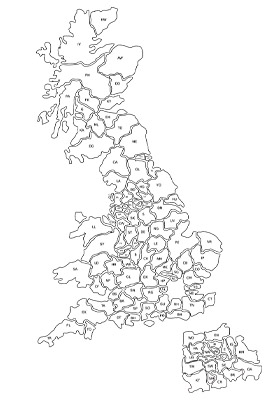The United Kingdom’s number plate system has long been a subject of curiosity and intrigue for both locals and visitors.
These unique combinations of letters and numbers adorning vehicles are not merely random sequences but hold valuable information about the vehicle’s age, origin, and even the owner.
In this blog, we will delve into the captivating world of UK number plates, exploring their history, format, and the fascinating stories they reveal.

The Evolution of UK Number Plates:
The concept of vehicle registration in the UK can be traced back to the Motor Car Act of 1903.
Initially, number plates were issued by local authorities and often featured varied and imaginative designs. However, it was not until 1932 that the format we recognise today was standardised.
This new system incorporated a letter indicating the vehicle’s region of origin, followed by a numeric sequence, providing a consistent structure for all number plates.
Decoding the Format:
To understand a UK number plate, it is essential to familiarise oneself with the format it follows.
The current format consists of two letters indicating the region of origin, followed by a two-digit number denoting the year of registration.
The final three letters are entirely random, assigned sequentially to vehicles. For instance, a plate reading “AB12 CDE” would mean the vehicle was registered in the Aberdeen area in 2012.
What are the first 2 Letters on a Number Plate?
The two letters at the beginning of the number plate signify the region where the vehicle was first registered.
For example, “AB” represents Aberdeen, “LD” stands for London, and “KA” refers to Kilmarnock.
With this system, it becomes possible to identify the approximate origin of a vehicle, offering a glimpse into its history.

Year Identifiers:
The two-digit number following the region letters represents the year of registration. However, it is crucial to note that this number does not necessarily correspond to the vehicle’s manufacturing year.
The DVLA (Driver and Vehicle Licensing Agency) assigns specific numbers each year, with “51” representing September 2001 to February 2002, “02” representing March 2002 to August 2002, and so on. This allows for easy identification of a vehicle’s age, assisting in matters such as MOT testing and road tax.
When are New Number Plates Released?
In the UK, number plates are introduced twice annually, specifically in March and September. On March 1st, 2023, the 23-plate was launched, and it will be assigned to any newly registered vehicle until August 31st, 2023.
Starting from September 1st, 2023, every fresh car registered in the UK will display the number 73. The sequence of number plates follows a pattern where the release in March 2020 introduced the 20 plate, followed by the 21 plate in the subsequent March, then the 22 plate, and so forth.

Personalised Plates and Prefixes:
In addition to the standard format, the UK allows for personalised number plates, providing a unique way for individuals to express their personality or interests.
Personalised plates can take various forms, such as incorporating names, initials, or words. Some people even opt for cherished number plates, which bear an emotional significance or connection to an event.
Private plates can also have prefix-style registrations, where the year identifier comes before the region letters. For example, “62 AB CD” indicates a vehicle registered in September 2012 in the Aberdeen area. This format, introduced in 1983, allows owners to maintain a consistent plate despite changing vehicles, as the number represents the year of purchase rather than the manufacturing year.
The Stories They Tell:
Behind every UK number plate lies a story waiting to be discovered. Whether it’s a cherished plate passed down through generations or a personalised plate celebrating an achievement, these seemingly simple combinations of letters and numbers carry a deeper meaning for their owners.
They serve as a unique identifier, making each vehicle distinguishable on the road and giving insight into the driver’s identity or preferences.
The UK number plate system is far more than just a means of identifying vehicles. It is an intriguing tapestry woven into the fabric of British automotive culture.
The combination of region codes, year identifiers, and personalisation options provides a fascinating insight into the history, age, and individuality of each vehicle.
So, the next time you spot a UK number plate, take a moment to decode its hidden messages and appreciate the stories it tells about the car and its owner.